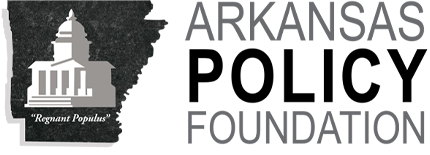(July 2017) Management consultants conducted efficiency reviews in Kansas, Louisiana, and North Carolina this decade, at costs ranging from $2.6-to-$4.2 million. Volunteers led an earlier Kansas project. A Policy Foundation review of published reports in these states1 found a broad range of estimated savings
($9.3 million to $2.7 billion). To-date savings vary by state, according to state executives and budget officials.2
Kansas
Two projects occurred in Kansas. The first originated with Democratic Gov. Kathleen Sebelius’ administration earlier this century, and led to changes in the state motor pool’s operation. A 2004 Kansas performance audit explained:
“The Central Motor Pool historically has been responsible for registering and insuring vehicles in its fleet, maintaining existing vehicles, buying new vehicles, and issuing vehicles for State employees’ short-term or long-term use. Before the changes, the Central Motor Pool and other State agencies owned more than 8,000 vehicles … (They) include an immediate 2-year moratorium on the purchase of new State vehicles, the elimination of underused vehicles, and the elimination of vehicles managed by the Central Motor Pool.”3
The Division of the Budget estimated that “the changes would, on a one-time bases, free up about $9.3 million for the State General Fund, to be used for other purposes.”4 The performance audit concluded actual “costs or cost savings from that decision aren’t known, though Sebelius’ budget director, in a 2004 letter reiterated that “the administration’s new approach to managing vehicles in Kansas will make over $9 million available for other uses in the State General Fund.”5
The second Kansas initiative is occurring under Republican Gov. Sam Brownback’s administration. The project was announced in October 2015, and relied on Alvarez & Marsal, a consulting firm.6 Kansas lawmakers set aside up to $3 million to pay for an efficiency study. The firm was hired after a competitive bidding process.7 A report released in January 2016 by the firm made 105 recommendations “which cumulatively would provide $2.04 billion in benefits to the State over the next five years.” These included the following:
∙ Recommendations in the area of procurement – the purchase of goods and services by agencies and other state-funded entities – could save the State over $100 million over five-years.
∙ Changing the way the State bids out, purchases and administers its insurance policies, will result in a five-year savings to taxpayers of over $170 million.
∙ Several changes at the Department of Corrections could provide $40 million in benefits over a five-year period.
∙ Proposals for the Department for Children and Families total $19 million over five-years.
∙ The Department of Revenue, as the key collector of tax revenues for the State, must operate as effectively as possible to ensure that all taxpayers are paying their taxes accurately. Several recommendations for the department will result in increased revenue of $381 million.
∙ Consolidation of data centers, network services, service desks, security, project management and other functions would produce over $40 million in savings over five-years.8
Gov. Brownback explained in his 2017 State of the State address that his budget adopted “recommendations from the efficiency study commissioned by the legislature.”9 His FY 2018 budget “assumes savings of $47.2 million from implementation of Alvarez & Marsal efficiency recommendations to include K-12 health benefit consolidation and sourcing select benefit categories on a statewide basis. The FY 2019 budget assumes savings of $89.0 million in anticipation of implementation of the same efficiencies.”10 Discussing the savings, Kansas Budget Director Shawn Sullivan told a legislative panel this year that “cost savings are difficult to identify until implementation.”11
Louisiana
Louisiana also retained Alvarez & Marsal in 2014 to conduct an efficiency review at a cost of $4.2 million.12 The Government Efficiency Management Support Project (GEMS) released a report in May 2014 that included 72 recommendations estimated to save $2.7 billion over a five-year period:13
∙ Generating additional revenue by the Department of Revenue of $45 million over two years through a new approach to litigation with delinquent taxpayers and recurring new revenue of approximately $53 million by working through the current backlog in audits, employing new technology and creating a cross-functional discovery team to make the audit function work better in the future.
∙ Obtaining savings through the Office of Risk Management of approximately $21 million a year by changing the process for procuring insurance on state-owned property, in ways that will attract more bidders and lower rates.
∙ Requiring home healthcare aides, who are being paid for out of state funds, to log their time through electronic time sheets, rather than through paper time sheets, thus eliminating approximations, overstatements of time spent with patients and other errors and, based on the experience of other states, saving the state $18 million a year once fully implemented.
∙ Creating a statewide occupancy management system and database for all state facilities and doing light renovations to reconfigure underutilized space in order to free up state-owned space for use by agencies currently occupying leased space, and result in a cost savings of approximately $11 million per year after implementation. The state could also realize an additional $22 million over two years from the sale of excess property.
∙ Implementing a strategic sourcing Initiative for all state procurement (in excess of $3.2 billion in addressable budget is spent each year), reducing the number of vendors for each product or service, analyzing spending by category, rationalizing fee and price schedules, sharing information among agencies – resulting in cost savings estimated at more than $55 million a year.14
According to Alvarez & Marsal, GEMS built on earlier work in this area:
“Since 2008, the State of Louisiana has enacted many reforms and instituted initiatives that have resulted in operational efficiencies across all state agencies. Projects such as the implementation of new call center technologies for customer service, modernizing existing legacy systems to reduce staffing needs, reorganizing divisions to improve productivity, realigning business functions within and between departments, and selling unused property and equipment improved the service of all state agencies to taxpayers. Other notable projects have included privatizing claims management and loss prevention in within the state government’s self insurance program, creating an Office of Mental Health by merging state mental health units, consolidating the state’s corrections population, and privatizing Dabadie and Avoyelles correctional facilities.”15
Republican Gov. Bobby Jindal attributed $145.6 million in savings to GEMS.16
An independent analyst noted Louisiana still faced a serious fiscal deficit.17
North Carolina
The North Carolina Government Efficiency and Reform (NC GEAR) initiative was established in 2013 “to identify achievable and significant recommendations for North Carolina to become more efficient and effective.”18 Project objectives were listed as follows:
∙ Evaluate the efficiency and effectiveness of state government, and identify specific strategies for making state government more efficient and effective;
∙ Identify sustainable recommendations for reform, cost reduction/avoidance, restructuring, and revenue enhancement that drive lower costs, improve service delivery models, increase effectiveness, and create a culture of continuous improvement across state government;
∙ Establish a sustainable program, through the creation of a Results Management Office to provide NC GEAR with the framework and tools to implement the recommendations, realize the intended benefits, and facilitate on-going improvements.19
The legislation creating NC GEAR stated the project should rely on outside consultants to evaluate state government. In April 2014, NC GEAR hired consultants from Deloitte Consulting LLP to provide expertise. Deloitte was selected after a competitive bidding process.20 Deloitte provided “a great deal of value in the main NC GEAR effort and supplementary work on IT restructuring, ERP planning, Temporary Solutions, and human resources in the UNC system. NC GEAR relied on Deloitte’s project management tools, and the firm’s data-driven process was a significant factor in its selection to work with NC GEAR.”21 The project operated with a $4 million appropriation.22
NC GEAR’s final report made 22 recommendations to “increase the efficiency, effectiveness, and customer service of state government, allowing agencies to focus on delivering their core services.” Estimated first year savings were $14 million.23 Two recommendations were enacted. North Carolina closed the state motor pool in January 2016 as part of a privatization move with estimated annual savings of $83,000.24 Republican Gov. Pat McCrory announced in March 2016 that changes at the state Division of Motor Fleet Management would result in a savings of more than $2 million for the state’s latest vehicle order. He said the state reassessed its needs, leading agencies to be assigned the least expensive, most fuel-efficient vehicles.25
Conclusion
A volunteer-led Kansas efficiency review earlier this century found $9.3 million in estimated savings. A 2016 report by management consultants cost $2.6 million and found $2.04 billion in potential savings. Gov. Sam Brownback projected savings of $47.2 million in FY 2018 and $89 million in FY 2019.
A Louisiana review in 2014 cost $4.2 million and estimated $2.7 billion in savings. Gov. Bobby Jindal claimed $145.6 million in savings from actions.
A North Carolina review in 2014-2015 operated with a $4 million appropriation and identified $14 million in first year savings. Gov. Pat McCrory noted more than $2 million in savings from two actions taken by his administration.
Independent audits would provide additional information for policymakers considering efficiency reviews in other states.
–Greg Kaza
1 The reports totaled more than 1,200 pages.
2 State motor pool operations in two states (Kansas, North Carolina) were altered as a result of efficiency reviews.
3 Kansas Legislative Post Audit Committee (February 2004). “Kansas’ Central Motor Pool: Determining Whether All Significant Costs and Cost Savings Were Considered In Decisions To Change This Function”
http://www.kslpa.org/assets/files/reports/04pa14a.pdf
4 Ibid. The reported savings are summarized as follows: $5.1 million – moneys in the Central Motor Pool’s Operating and Depreciation Funds that would be swept into the State General Fund for other purposes. $3.2 million – moneys agencies asked for in their FY 2005 budget requests to buy new vehicles that now would be reallocated for other General Fund expenditures. $1.1 million – proceeds from the sale of retired and underused State vehicles.
5 Kansas Budget Director Duane Goossen letter to Barbara J. Hinton, Legislative Post Auditor (Feb. 6, 2004)
6 http://www2.ljworld.com/news/2015/oct/06/kansas-inks-efficiency-study-26m/
7 http://www2.ljworld.com/news/2015/sep/19/panel-picks-alvarez-marsal-efficiency-study/
8 Alvarez & Marsal (January 19, 2016) “Kansas Statewide Efficiency Review.” A summary posted on the Kansas Legislative Research site listed 21 “top recommendations” from the firm. http://www.kslegresearch.org/KLRD-web/Publications/AppropriationsRevenue/KsEfficiencyReviewPresentationUpdate-2016Feb16.pdf
9 https://governor.kansas.gov/wp-content/uploads/2017/01/2017-State-of-the-State.pdf, p. 6
10 Kansas Office of the Governor. “The Governor’s Budget Report: Fiscal Year 2018, Vol. 1.” budget.ks.gov/publications/FY2018/FY2018_GBR_Vol1–UPDATED–1-12-2017.pdf
11 Minutes of the Kansas House Taxation Committee (January 11, 2017) p. 5
12 https://wwwprd.doa.louisiana.gov/doa/PressReleases/Govtl_Efficiencies_Mgmt_Suppt_Contract.htm
13 One Louisiana media report: http://theadvocate.com/home/9351628-125/report-offers-27-billion-in-savings
14 Alvarez & Marsal (May 29, 2014) “Louisiana Management Government Efficiencies Management Support Final Report.”
http://www.doa.la.gov/orm/pdf/2014_Louisiana_Government_Efficiencies_Management_Support(GEMS)Final_Report.pdf
15 Ibid., p. 21
16 “Governor Jindal’s Fiscal Year 2016 Executive Budget,” p. 4.
http://www.doa.la.gov/Publications%20Documents/FY16%20Budget%20Highlights%202-27-15.pdf
17 “Louisiana’s State Budget Vertigo” (April 17, 2015). The Public Affairs Research Council of Louisiana.
http://parlouisiana.org/wp-content/uploads/2016/02/Louisiana_State_Budget.pdf
18 North Carolina Session Law 2013-360, Section 6.5
19 NC GEAR Initiative Joint Legislative Program Evaluation Oversight Committee Update (June 23, 2014) p. 4
20 “NC GEAR Interim Report,” p. 5 (April 2014) http://ncgear.nc.gov/
21 “NC Gear Final Report,” p. 64 (March 5, 2015) http://ncgear.nc.gov/
22 Arkansas Policy Foundation (Fall 2016) “Arkansas Efficiency Project Report”
23 NC Gear Final Report, p. 2
24 http://nccapitolconnection.com/2016/01/12/nc-motor-pool-privatized-this-week/
25 http://nccapitolconnection.com/2016/03/21/mccrory-state-to-save-2m-on-latest-vehicle-purchase/ “The state saved $1.9 million for the 2016 order through the purchase price of the vehicles compared with past orders.” Estimated fuel cost savings were $464,000 over the seven-year life of the vehicles, “meaning a total savings of $2.3 million.”









